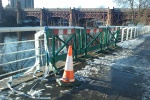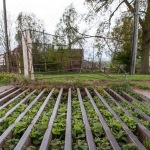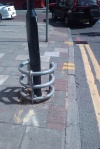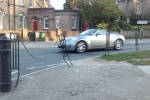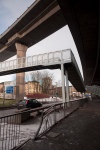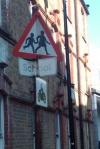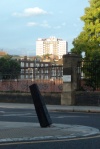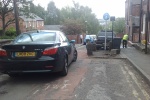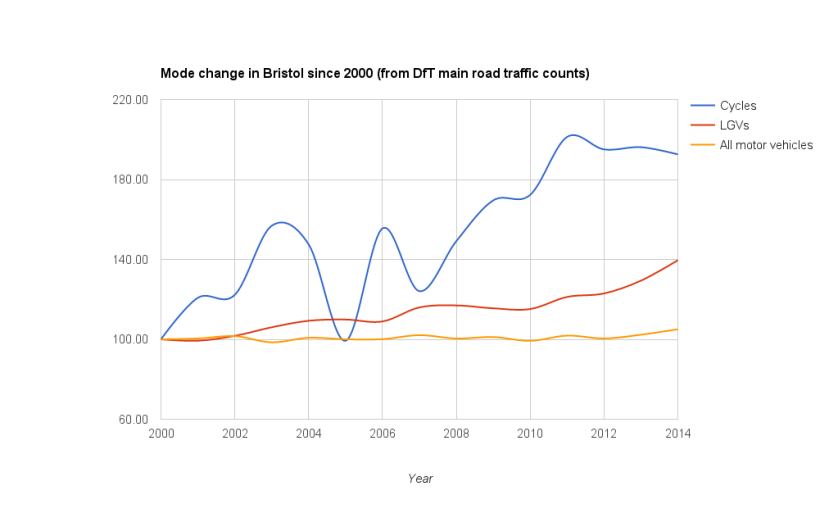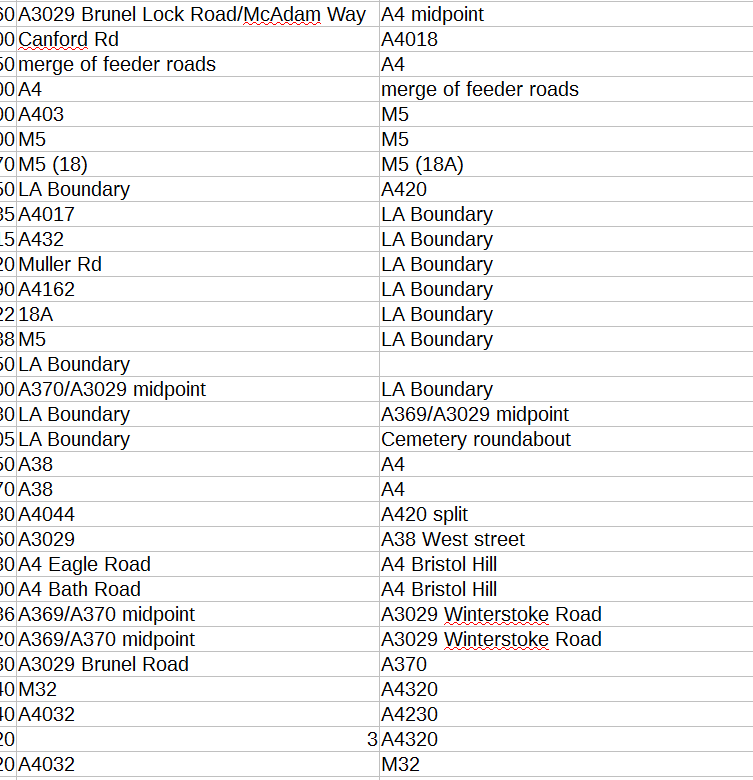No more learned an authority than Lord Alan Sugar recently proclaimed that cycling infrastructure is unnecessary because cyclists simply need more situational awareness and training.
I realise now that the noble lord has a point. We could save the tiny number of very important people like Lord Sugar who drive into London minutes on their journeys if we just train everybody to be more situation aware.
There’s just one thing I’d have to add to Lord Sugar’s training programme: it’s not just the cyclists we’d have to train.
Because these signposts also need more situational awareness.
These traffic lights need more situational awareness.
This bridge needs more situational awareness.
This guardrail needs more situational awareness.
This utilities cabinet needs more situational awareness.
These bollards need more situational awareness.
This street lamp needed more situational awareness.
These stands needs more situational awareness.
This pedestrian refuge needs more situational awareness.
This pedestrian refuge needs more situational awareness.
These bollards need more situational awareness.
This bridge needs more situational awareness.
This pedestrian refuge needs more situational awareness.
This 20mph sign needs more situational awareness.
This bollard bottom right needs more situational awareness.
This utilities box needs more situational awareness.
This stand needs more situational awareness.
This bin needs more situational awareness.
This bridge needs more situational awareness.
This lamp post needs more situational awareness.
All of this needs more situational awareness.
These signs need more situational awareness.
This stuff needs more situational awareness.
This bridge needs more situational awareness.
This pedestrian crossing needs more situational awareness.
This zebra crossing needs more situational awareness.
These bollards need more situational awareness.
These 20mph signs need more situational awareness.
This bridge needs more situational awareness.
And this bridge needs more situational awareness.
This pedestrian crossing needs more situational awareness.
All of this shit needs more situational awareness:
This railway needs more situational awareness:
This underground railway needs more situational awareness:
This lake needs more situational awareness:
https://twitter.com/KatyHolliday/status/684697437051682816
This “Let’s look out for eachother” sign needs more situational awareness:
This sign needs more situational awareness:
These bollards need more situational awareness:
This sign for cyclists needs more situational awareness:
This photographic representation of a cyclist on a phone box advert needs more situational awareness:
This pedestrian guardrail needs more situational awareness:
Traffic signals need more situational awareness:
Ponies need more situational awareness:
The sea needs more situational awareness:
All of this needs more situational awareness:
Cycle paths need more situational awareness:
Trees need more situational awareness:
Rivers need more situational awareness:
These Dutch things need more situational awareness:
This pedestrian refuge needs more situational awareness:
This bus lane and contraflow cycle lane needs more situational awareness:
These trees need more situational awareness:
This traffic signal needs more situational awareness:
This pedestrian crossing button needs more situational awareness:
This pedestrian refuge needs more situational awareness:
This pedestrian refuge needs more situational awareness:
This pedestrian crossing needs more situational awareness:
If we can train the cyclists to have more situational awareness and we can train the road signs and the bollards and the bridges and the pedestrian refuges and the zebra crossings and the traffic lights and the fences and the bell bollards and the utilities boxes and the bins and the railways and the lakes and the phone boxes and the guardrail and the cycle paths and the sea to have more situational awareness… then we’re 👌. Lord Sugar will once again be able to do whatever the fuck he likes.
Oh, except we’ll also have to train all the houses, and some of those are quite old and set in their ways…


